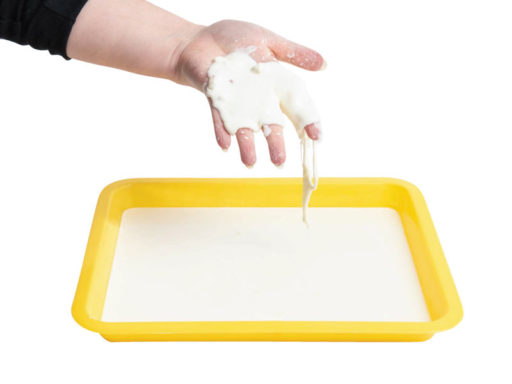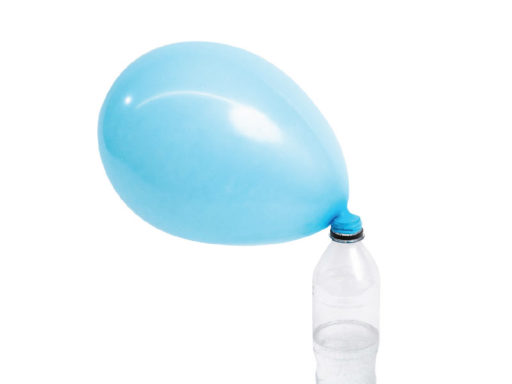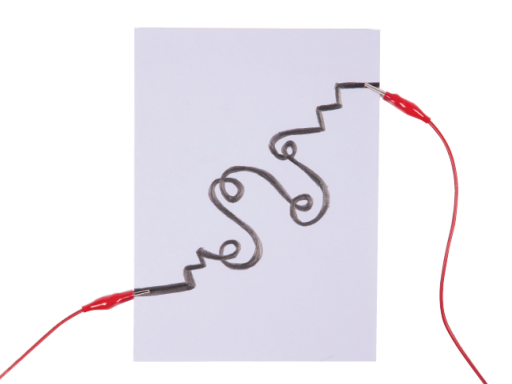Ice cream is basically droplets of fat from milk suspended in millions of tiny crystals of ice, fluffed up with tiny pockets of air.
This activity shows you how to make the right mixture, then make it cold enough to create those ice crystals without the aid of a freezer. It also reveals how salt and ice make a chilling combination.
Printable downloads
Follow these steps…
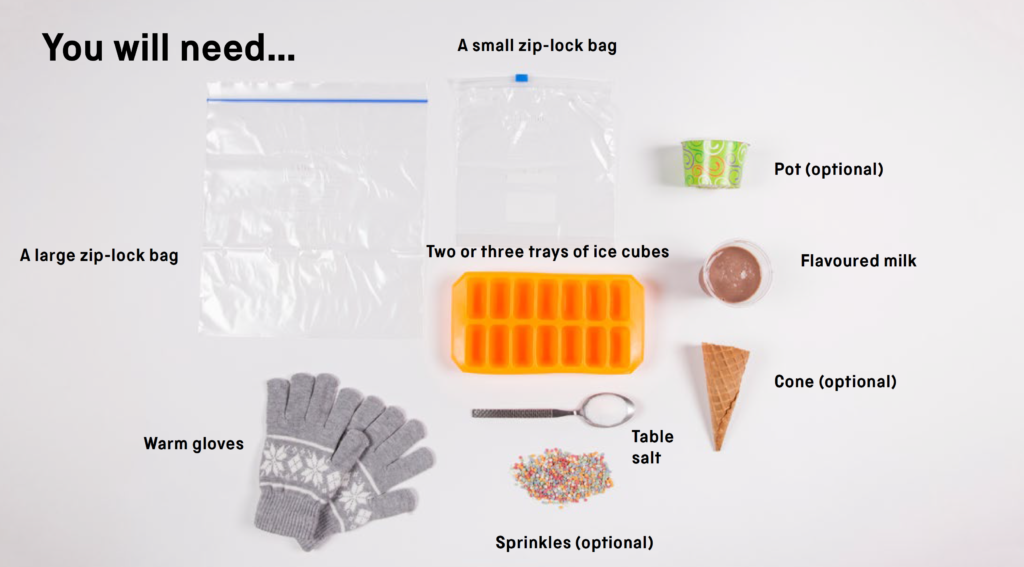
-
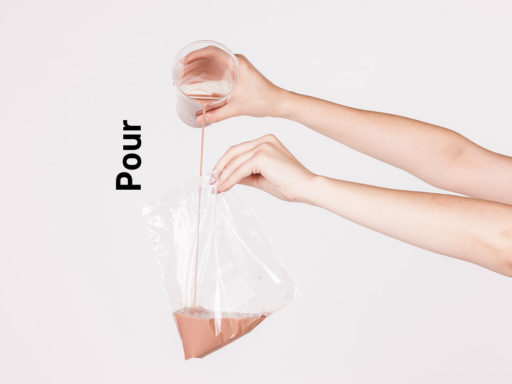 Pour half a cup of flavoured milk into the small zip-lock bag and seal it tight.
Pour half a cup of flavoured milk into the small zip-lock bag and seal it tight. -
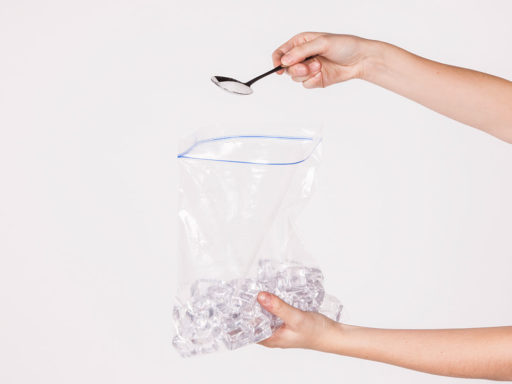 Put a generous amount of ice into the large zip-lock bag, then add 6 tablespoons of salt. The salt lowers the freezing point of the ice, and you will see the ice begin to melt.
Put a generous amount of ice into the large zip-lock bag, then add 6 tablespoons of salt. The salt lowers the freezing point of the ice, and you will see the ice begin to melt. -
 Place the small zip-lock bag inside the large bag with the ice and salt, and seal the large bag.
Place the small zip-lock bag inside the large bag with the ice and salt, and seal the large bag. -
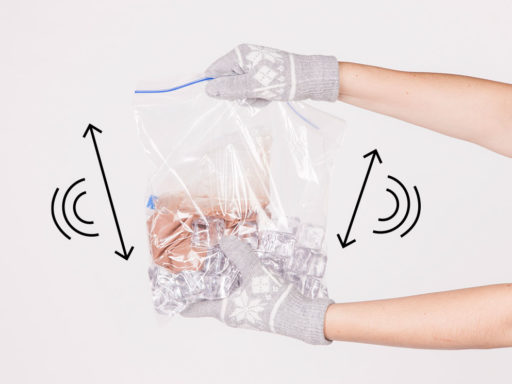 Put on some gloves (so your hands don’t get cold) and start to gently shake and squeeze the bag.
Put on some gloves (so your hands don’t get cold) and start to gently shake and squeeze the bag. -
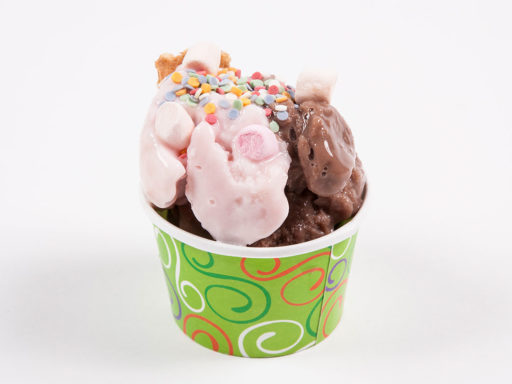 After five minutes of shaking, carefully take the small bag out and taste your ice cream! Top tip: Be careful not to spill any of the salty ice water or mix it with your ice cream as you get it out of the bag.
After five minutes of shaking, carefully take the small bag out and taste your ice cream! Top tip: Be careful not to spill any of the salty ice water or mix it with your ice cream as you get it out of the bag.
Think and talk about…
- What do you see happening to the ingredients?
- What do you think the salt is doing? How could you find out more?
- How does the finished product compare with shop-bought ice cream?
Investigate…
- Can you make the ice cream freeze faster? Try altering the amount of salt or how much you shake the mixture.
- Try different ingredients – do they behave in the same way?
Did you know?
Zero degrees on the Fahrenheit temperature scale, equivalent to –18°C, was originally defined as the temperature of a freezing concentrated mixture of salt and water.
What’s the science?
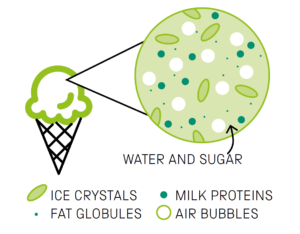 Pure water freezes at 0 degrees Celsius. Add salt and the freezing point drops by a few degrees. When you add salt to the ice in the outer bag, the ice (at 0°C) is now above its freezing point – so it begins to melt. Melting requires energy, and in this case that energy comes from the flavoured milk mixture in the inner bag. Ice crystals start to grow in-between the tiny globules of fat in the milk and bubbles of air, causing the milk to freeze and change state from a liquid to a solid.
Pure water freezes at 0 degrees Celsius. Add salt and the freezing point drops by a few degrees. When you add salt to the ice in the outer bag, the ice (at 0°C) is now above its freezing point – so it begins to melt. Melting requires energy, and in this case that energy comes from the flavoured milk mixture in the inner bag. Ice crystals start to grow in-between the tiny globules of fat in the milk and bubbles of air, causing the milk to freeze and change state from a liquid to a solid.
Science in your world
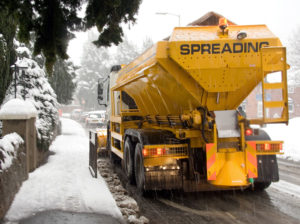 During the winter, grit spreaders often throw rock salt onto major roads if the temperature is forecast to drop below freezing. When snow falls on the salt, it melts in the same way as the ice in the outer bag in the activity. And spreading the salt before the temperature drops below 0°C means ice cannot form on the road – unless the temperature plunges much lower.
During the winter, grit spreaders often throw rock salt onto major roads if the temperature is forecast to drop below freezing. When snow falls on the salt, it melts in the same way as the ice in the outer bag in the activity. And spreading the salt before the temperature drops below 0°C means ice cannot form on the road – unless the temperature plunges much lower.
